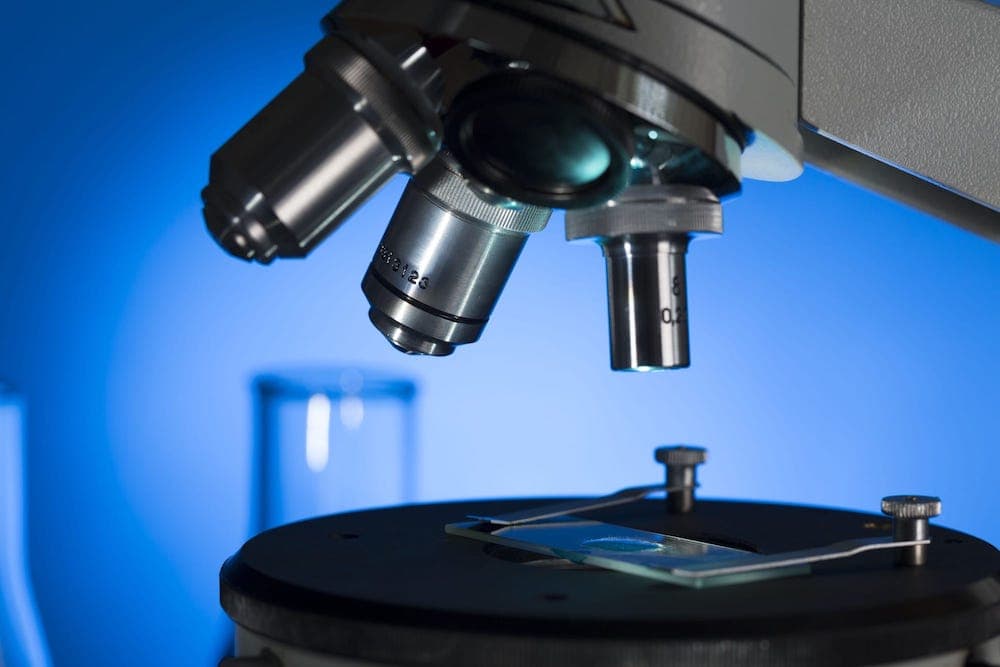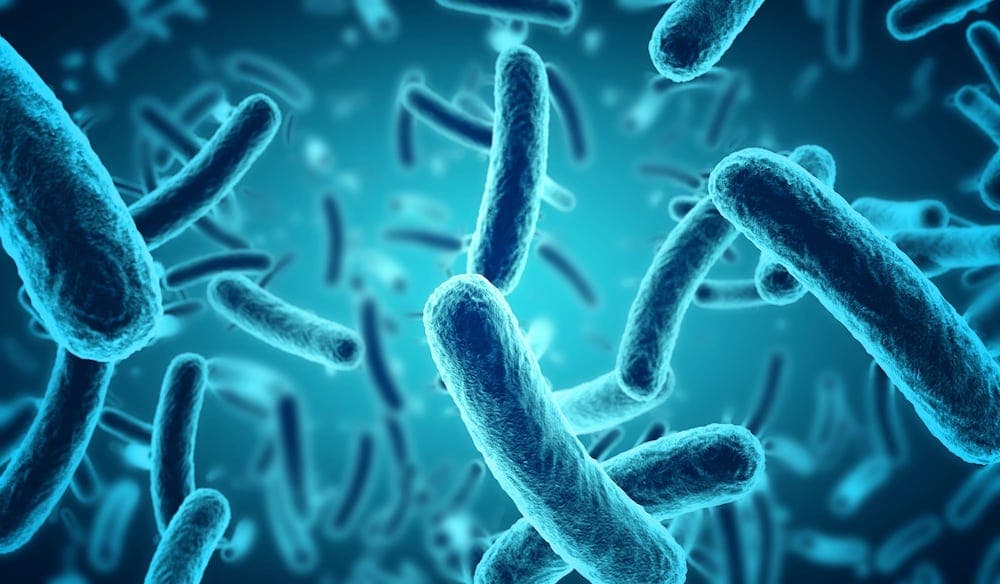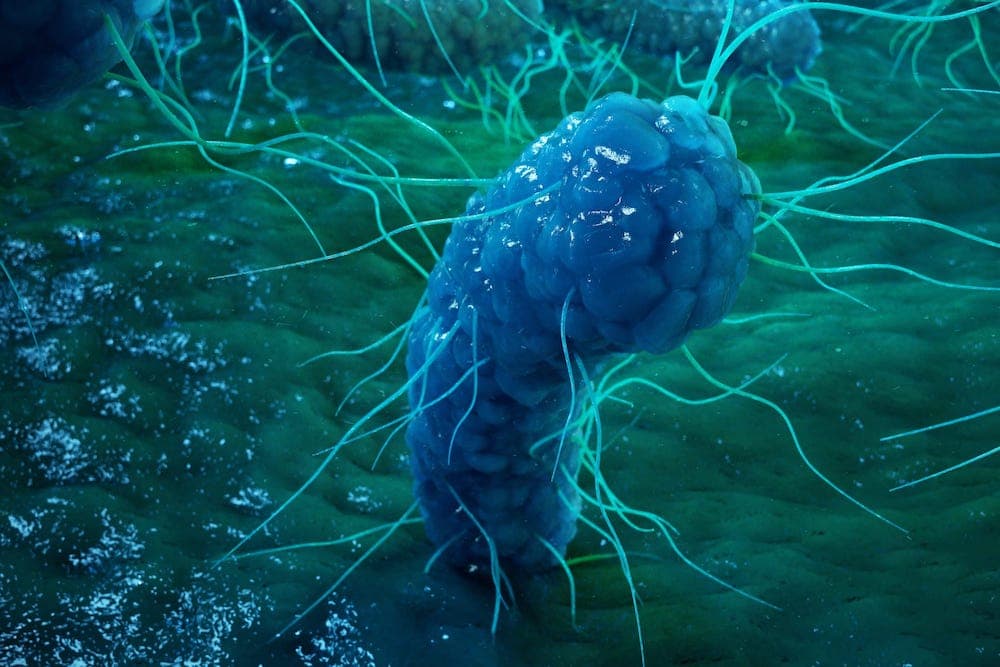Learn : Research & Success Stories
Evolution of Microbiome Research
When we hear about bacteria, it is usually linked to disease: an Escherichia coli outbreak tied to romaine lettuce and the rise of antibiotic-resistant bacterial strains are just two examples. However, bacteria are also connected with valuable properties like lower risk of inflammatory bowel disease, diabetes, obesity, and other chronic diseases. Most animals have a
Our colonized microorganisms are collectively referred to as the “microbiota.” While scientists have known for decades that we are host to millions of bacteria, research investigating the role of the microbiome has only recently become a focal point. It has expanded to encompass not only human medicine but the health of other animals as well (including pets), leading to astounding links to our overall health.
Origins of Microbiome Research
The idea of the microbiome first arose when scientists discovered that removing all microorganisms from animals, called germ-free1,2, created individuals that were physiologically different than their counterparts who played host to various bacterial species. For example, germ-free mice require vitamin K supplements3, as they cannot metabolize it from their food. They also tend to be more susceptible to infection by some bacteria4 and viruses5.
Thus, it seemed that microbes were important regulators of animal nutrition, health, and physiology. Researchers called this collection of microscopic organisms the “normal flora” or “microflora.” These terms have since fallen out of favor, as most current researchers refer to our collective bacterial symbionts as the “microbiota” or the “microbiome.”
Human Microbiome Research
For a long time, animal microbiomes, including that of humans, remained poorly understood as researchers were limited by available technologies. Culture-based methods were the most popular way to determine which bacterial symbionts thrived in different body cavities. “Culture-based” means that researchers grow bacteria taken from a specific microbiome, such as a mouth swab, and attempt to grow them in the lab and identify them. They do this by providing the necessary components for growth, such as
There are a variety of methods by which these bacteria can be identified, for example, the bacteria may be able to utilize a certain resource, resulting in a color change in the broth. It is a way to identify specific bacterial species within a sample, much like identifying a toothpick in a sea of needles by determining which one catches on fire. The main limitation of this method is that the vast majority of bacteria simply cannot be grown in the lab, thus limiting the number of species that can be identified.
The success of the Human Genome Project6 in 2003 transformed our ability to classify microbial companions in part by advancing DNA sequencing technologies, which are non-culture-based, and therefore not subject to the limitations of culturing.
Microbial DNA can further be distinguished from host DNA (such as
The goal of this project was to create a database describing all the microorganisms living in association with humans. They found that the human microbiome is incredibly diverse between healthy people, likely influenced by diet, environment, genetics, and exposure. These findings led the way for more research to characterize the functional consequences of our microbiome.
Numerous studies, performed both before and after the Human Microbiome Project, have described the impacts of our varied microbial populations on health. In 2018 alone, over 1,000 microbiome related studies have been published. Our microbiome affects a myriad of physiological conditions. Oral bacteria, for instance, can protect teeth from cavities by outcompeting the species Streptococcus mutans9.
In the gut microbiota, bacteria aid in
Research In Other Animals
Knowledge of the human microbiome is generally supplemented by research done on other animals. Mice15, for instance,
For example, the microbiomes of dolphins at the Shedd Aquarium in Chicago16 are affected more by diet and the air they breathe than water composition in their tank or skin-to-skin contact with their handlers, and captive baboons have vastly different microbiomes than wild baboons17. Understanding the differences in composition between wild animals and those in captivity can help conservation efforts to keep captive animals healthy even when introduced to spaces that could potentially alter their microbiota.
Microbiome research has additionally explored differences between our close canine companions and their relatives, wolves18. Domestic dogs and wolves do share some bacterial groups, but a number of bacteria are specific to each species. The significance of these differences has not yet been explored, but it suggests that the domestication of dogs may have impacted their microbial communities, as well as their ability to tolerate small amounts of starch and vegetation in their diets19.
Dog Pet microbiome research has slowly been advancing and the rate of increase in previous years has been substantial. Previous work has focused on how diet shapes your dog’s gut bacteria and the impact of gut microbes on nutrition. However, there are broad efforts to determine how pet parents can keep their dogs healthy. Feline microbiomes are also under scrutiny20,21, although to a lesser extent than dogs. The bacteria that comprise their gut have been identified and are similar to other mammals. Moreover, this composition can be influenced by
The Future of Microbiome Research
The more we know about the world at large, including animals kept in captivity or our companion animals, the better we can keep them (and ourselves) healthy and ensure they receive optimal care. Microbiome studies have come a long way over the past two decades. Advances in sequencing technologies have allowed scientists to conduct research that is more comprehensive than in the past.
However, correlation is not causation and most relationships between health or disease risk and microbial composition
References
1. Luckey, T. D. Effects of Microbes on Germfree Animals11Presented in modified form as the principal talk at the International Symposium on Microecology, Berlin,
2. Al-Asmakh, M. & Zadjali, F. Use of Germ-Free Animal Models in Microbiota-Related Research. J. Microbiol. Biotechnol. 25, 1583–1588 (2015).
3. Hirayama, K., Uetsuka, K., Kuwabara, Y., Tamura, M. & Itoh, K. Vitamin K deficiency of germfree mice caused by feeding standard purified diet sterilized by gamma-irradiation. Exp. Anim. 56, 273–278 (2007).
4. Khosravi, A. et al. Gut microbiota promote hematopoiesis to control bacterial infection. Cell Host Microbe 15, 374–381 (2014).
5. Pfeiffer, J. K. & Sonnenburg, J. L. The intestinal microbiota and viral susceptibility. Front. Microbiol. 2, 92 (2011).
6. An Overview of the Human Genome Project. National Human Genome Research Institute (NHGRI) Available
7. Sender, R., Fuchs, S. & Milo, R. Are We Really Vastly Outnumbered? Revisiting the Ratio of Bacterial to Host Cells in Humans. Cell 164, 337–340 (2016).
8. NIH Human Microbiome Project - About the Human Microbiome. Available at: https://hmpdacc.org/hmp/overview/. (Accessed: 5th December 2018)
9. Huang, X. et al. A Highly Arginolytic Streptococcus Species That Potently Antagonizes Streptococcus
10. Flint, H. J., Scott, K. P., Louis, P. & Duncan, S. H. The role of the gut microbiota in nutrition and health. Nat. Rev. Gastroenterol. Hepatol. 9, 577–589 (2012).
11. Clemente, J. C., Ursell, L. K., Parfrey, L. W. & Knight, R. The impact of the gut microbiota on human health: an integrative view. Cell 148, 1258–1270 (2012).
12. Huffnagle, G. B. The microbiota and allergies/asthma. PLoS Pathog. 6, e1000549 (2010).
13. Evrensel, A. & Ceylan, M. E. The Gut-Brain Axis: The Missing Link in Depression. Clin. Psychopharmacol. Neurosci. 13, 239–244 (2015).
14. Thaiss, C. A. et al. Microbiota Diurnal Rhythmicity Programs Host Transcriptome Oscillations. Cell 167, 1495–1510.e12 (2016).
15. Clavel, T., Lagkouvardos, I., Blaut, M. & Stecher, B. The mouse gut microbiome revisited: From complex diversity to model ecosystems. Int. J. Med. Microbiol. 306, 316–327 (2016).
16. Researchers study how
17. Baboons shed light on antimicrobial resistance. Available at: https://phys.org/news/2018-06-baboons-antimicrobial-resistance.html. (Accessed: 5th December 2018)
18. Wu, X. et al. Analysis and comparison of the wolf microbiome under different environmental factors using three different data of Next Generation Sequencing. Sci. Rep. 7, 11332 (2017).
19. Moon, C. D., Young, W., Maclean, P. H., Cookson, A. L. & Bermingham, E. N. Metagenomic insights into the roles of Proteobacteria in the gastrointestinal microbiomes of healthy dogs and cats. Microbiologyopen e00677 (2018).
20. Kitty Biome. Available at: https://www.kittybiome.com/. (Accessed: 5th December 2018)
21. Minamoto, Y., Hooda, S., Swanson, K. S. & Suchodolski, J. S. Feline gastrointestinal microbiota. Anim. Health Res. Rev. 13, 64–77 (2012).



 Microbiome And Pet Health
Microbiome And Pet Health
 Microbes in the Gut
Microbes in the Gut
 Microbiome in Nutrition
Microbiome in Nutrition
 Giardia & Its Link to the Microbiome
Giardia & Its Link to the Microbiome
 Cancer & the Microbiome
Cancer & the Microbiome
 The Link Between Gut Microbes and Your Pet's Brain
The Link Between Gut Microbes and Your Pet's Brain